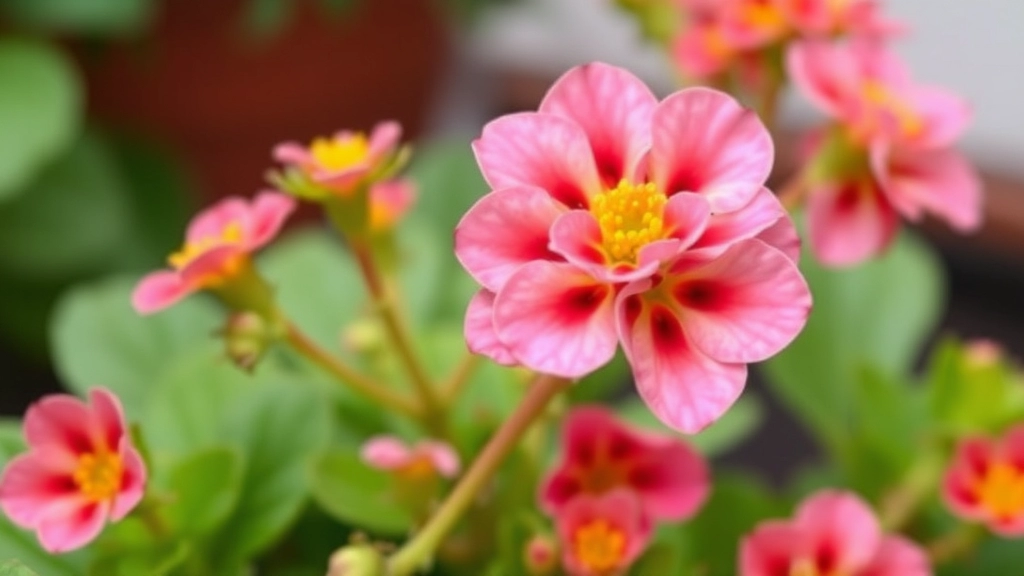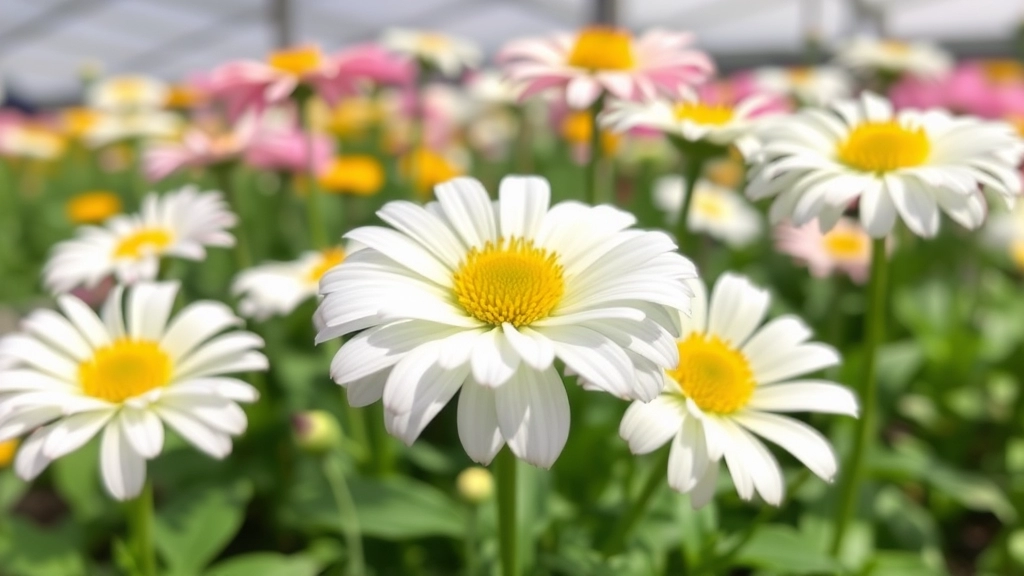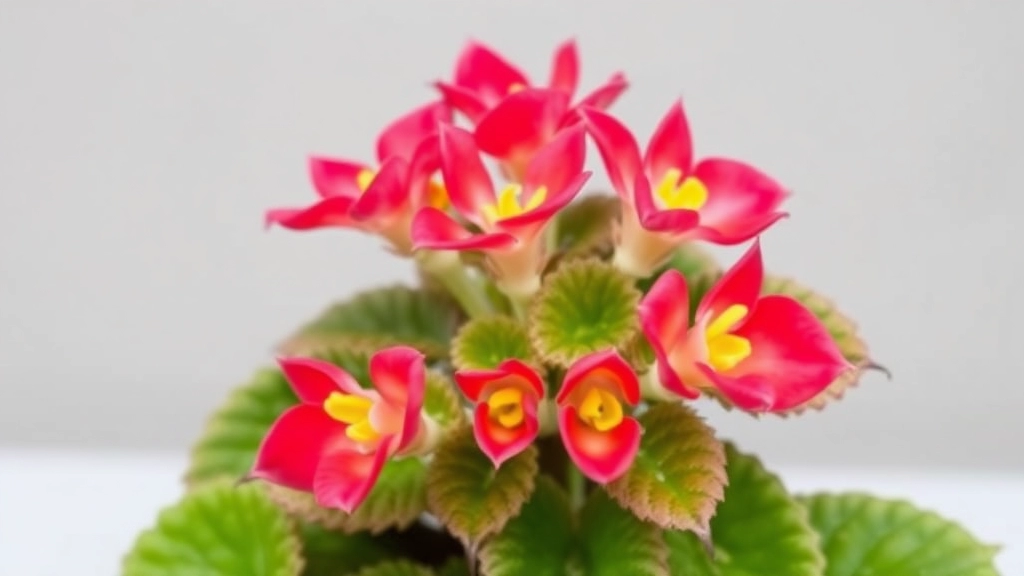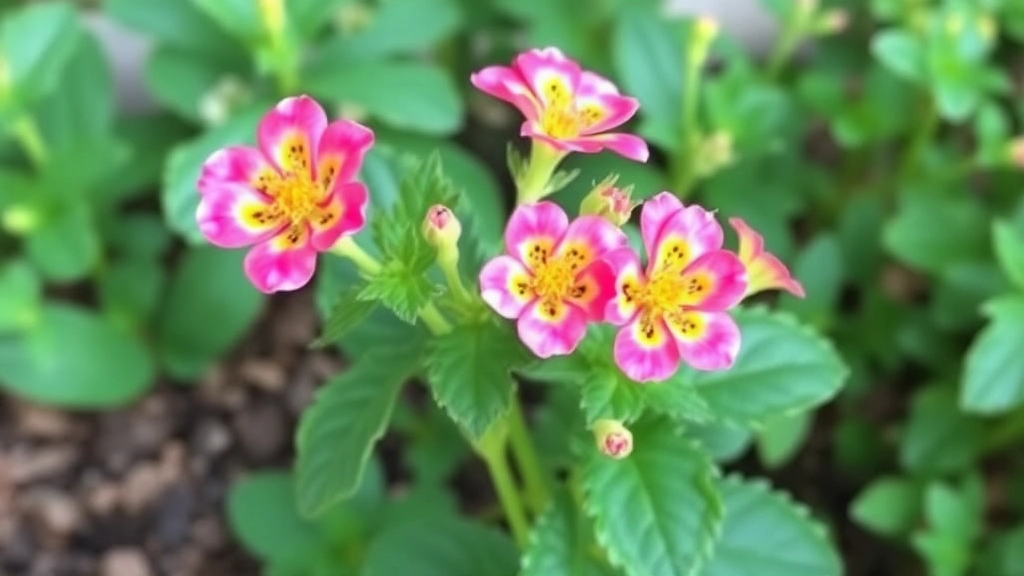How Many Times Does Kalanchoe Bloom?
Ever wondered, “How many times does Kalanchoe bloom?” You’re not alone. Typically, Kalanchoe blooms once a year, but with the right care, you can coax it into multiple blooming cycles. Let’s dive into the factors that influence its bloom cycle and how you can encourage your Kalanchoe to bloom again.
Factors Influencing Bloom Cycle
Understanding the optimal blooming period and the specific light and temperature requirements is crucial. Additionally, proper watering and fertilizing practices play a significant role in extending the bloom period. We’ll also cover how to handle dormancy and troubleshoot common issues to ensure your Kalanchoe thrives year-round.
Optimal Blooming Period for Kalanchoe
When it comes to Kalanchoe, many plant enthusiasts often wonder: when is the best time for these vibrant succulents to bloom?
The optimal blooming period for Kalanchoe typically falls between late winter and early spring. This is when they showcase their stunning flowers, transforming any space into a vibrant display of colour.
Key Points on Blooming Period:
- Timing: Late winter to early spring is ideal for blooming.
- Duration: Blooms can last several weeks, providing a long-lasting display.
- Varieties: Different Kalanchoe varieties may have slight variations in blooming times.
Understanding this blooming window is crucial for any Kalanchoe owner. By aligning care practices with this period, you can enjoy the full potential of your plant’s beauty. For more detailed information, you might find the care tips for Kalanchoe after blooming useful. Additionally, if your Kalanchoe isn’t flowering as expected, you can explore the causes and fixes for non-flowering Kalanchoe.
Factors Influencing Kalanchoe’s Bloom Cycle

Ever wondered why your Kalanchoe isn’t blooming as much as you’d like?
There are several factors at play that can impact its bloom cycle.
1. Light Exposure
Kalanchoe loves the sun!
It thrives in bright, indirect light.
Too little light can lead to fewer blooms, while too much direct sunlight can scorch its leaves.
Finding that sweet spot is key!
2. Temperature
These beauties prefer a warm environment.
Ideal temperatures range from 18°C to 24°C.
If it gets too cold, the plant may go dormant, skipping its blooming phase altogether.
3. Watering Practices
Overwatering is a common mistake.
Kalanchoe prefers to dry out between waterings.
If the soil stays too wet, it can lead to root rot, which stunts blooming.
4. Fertilization
A balanced fertiliser can work wonders.
Feeding your Kalanchoe every few weeks during the growing season can encourage more blooms.
But be careful not to overdo it; too much fertiliser can have the opposite effect.
5. Pruning
After blooming, a good prune can help.
Cutting back spent flowers and leggy growth encourages new growth and can lead to more blooms down the line.
6. Pot Size
Believe it or not, the pot size matters!
A pot that’s too big can hold too much moisture, while a snug pot encourages blooming.
Choose a pot that gives the roots room to breathe but isn’t overly spacious.
How to Encourage Kalanchoe to Bloom Again
After understanding the optimal blooming period for Kalanchoe and the factors that influence its bloom cycle, it’s time to explore how to encourage this resilient plant to bloom once more.
Many plant enthusiasts often ask, âWhy isn’t my Kalanchoe blooming again?â
The good news is there are several effective strategies to help your Kalanchoe thrive and produce those vibrant flowers again.
Key Strategies for Encouraging Reblooming
- Pruning
- Trim back spent flowers and any leggy growth.
- This encourages the plant to focus its energy on new blooms rather than maintaining old flowers.
- Light Adjustment
- Ensure your Kalanchoe receives bright, indirect sunlight.
- A south-facing window is ideal. Too little light can hinder blooming.
- Temperature Control
- Maintain a temperature range of 18-24°C (65-75°F).
- Kalanchoe prefers a warm environment, but avoid sudden temperature drops.
- Watering Schedule
- Allow the soil to dry out between waterings.
- Overwatering can lead to root rot and prevent blooming.
- Fertilization
- Use a balanced, water-soluble fertiliser every four weeks during the growing season.
- A fertiliser high in phosphorus can promote blooming.
- Dormancy Management
- After blooming, allow the plant to rest.
- Reduce watering and stop fertilising for a few weeks to encourage a natural dormancy period.
- Stress Techniques
- Some gardeners find success by slightly stressing the plant.
- This can be done by withholding water for a short period, which can trigger blooming.
By implementing these strategies, you can create the ideal conditions for your Kalanchoe to flourish and produce beautiful flowers again. For more detailed care tips, check out our Essential Fall Kalanchoe Care Tips and our comprehensive Kalanchoe Mother of Thousands Care Guide.
Light and Temperature Requirements for Reblooming

As we explore the essentials for encouraging Kalanchoe to bloom again, understanding its light and temperature needs is crucial. Many plant enthusiasts often wonder why their Kalanchoe isn’t producing those vibrant flowers.
Optimal Light Conditions
Kalanchoe thrives in bright, indirect sunlight. Here’s how to ensure your plant gets the right amount:
- Location: Place your Kalanchoe near a south or west-facing window.
- Duration: Aim for about 12-14 hours of light each day.
- Avoid Direct Sunlight: Too much direct sunlight can scorch the leaves.
If you notice your Kalanchoe stretching towards the light, it may be a sign that it needs more brightness.
Temperature Preferences
Temperature plays a significant role in the blooming cycle of Kalanchoe. Here’s what to keep in mind:
- Ideal Range: Kalanchoe prefers temperatures between 18°C and 24°C (65°F to 75°F).
- Nighttime Drop: A slight drop in temperature at night, ideally around 10°C to 15°C (50°F to 60°F), can promote blooming.
- Avoid Extremes: Protect your plant from drafts and sudden temperature changes.
By providing the right light and temperature, you’ll create an environment where your Kalanchoe can thrive and produce beautiful blooms.
Best Practices for Watering and Fertilizing to Extend Blooms
As we delve into how to encourage Kalanchoe to bloom again, proper watering and fertilizing practices play a pivotal role.
How to Handle Dormancy Periods for Kalanchoe

So, you’ve enjoyed a stunning display of blooms from your Kalanchoe, but now it seems to be taking a break.
It’s totally normal for these beauties to enter a dormancy period, especially after their flowering season.
Understanding Dormancy
During dormancy, your Kalanchoe might look a little sad, with fewer leaves and no flowers. But don’t worry; this is just part of their natural cycle.
Here’s how to handle it:
- Cut Back on Watering:
- Reduce watering frequency.
- Allow the soil to dry out completely between waterings.
- Limit Fertiliser:
- Cut back on fertiliser during this time.
- Too much can stress your plant.
- Provide a Resting Environment:
- Keep the plant in a cool, dry place.
- Avoid direct sunlight; indirect light is perfect.
- Monitor Temperature:
- Aim for temperatures between 15-18°C (59-65°F).
- This mimics their natural habitat during dormancy.
- Be Patient:
- Remember, this phase is temporary.
- It can last from a few weeks to a couple of months.
By keeping these points in mind, you can support your Kalanchoe through its dormancy and prepare it for a vibrant reblooming phase.
Troubleshooting Common Issues with Kalanchoe Reblooming
As we delve into the challenges of encouraging Kalanchoe to bloom again, it’s important to recognise that even the most diligent care can sometimes lead to unexpected hurdles.
FAQs About Kalanchoe Blooming
How many times does Kalanchoe bloom in a year?
Kalanchoe typically blooms once a year, but with proper care, it can be encouraged to bloom more frequently. Understanding its light, temperature, and watering needs can help extend its blooming cycle.
What kind of light does Kalanchoe need to bloom?
Kalanchoe thrives in bright, indirect sunlight. Aim for about 12-14 hours of light each day. Avoid direct sunlight as it can scorch the leaves.
What temperature is ideal for Kalanchoe to bloom?
Kalanchoe prefers temperatures between 18°C and 24°C (65°F to 75°F). A slight drop in temperature at night, ideally around 10°C to 15°C (50°F to 60°F), can also promote blooming.
How should I water my Kalanchoe to encourage blooming?
Allow the soil to dry out completely between waterings. Overwatering can lead to root rot, which stunts blooming. During dormancy, reduce the watering frequency even further.
When and how should I fertilize my Kalanchoe?
Use a balanced fertilizer every few weeks during the growing season to encourage more blooms. However, be careful not to over-fertilize, as this can have the opposite effect.
Does pruning affect Kalanchoe blooming?
Yes, pruning after blooming can encourage new growth and lead to more blooms. Cut back spent flowers and leggy growth to help the plant focus its energy on new blooms.
What should I do if my Kalanchoe enters a dormancy period?
During dormancy, reduce watering and limit fertilization. Keep the plant in a cool, dry place with indirect light. Be patient, as this phase can last from a few weeks to a couple of months.
How does pot size affect Kalanchoe blooming?
A pot that’s too big can retain too much moisture, which is detrimental to blooming. Choose a pot that gives the roots room to breathe but isn’t overly spacious to encourage blooming.
Why is my Kalanchoe not blooming?
Several factors could be at play, including insufficient light, incorrect temperatures, overwatering, or lack of nutrients. Adjusting these conditions can help encourage blooming.
Can temperature fluctuations affect Kalanchoe blooming?
Yes, Kalanchoe is sensitive to temperature changes. Protect your plant from drafts and sudden temperature changes to maintain a stable environment conducive to blooming.
References
-
How to Grow Kalanchoe Indoors – The Spruce
-
Kalanchoe Care – Gardening Know How
-
Kalanchoe: How to Grow and Care for Kalanchoe Plants – The Old Farmer’s Almanac
